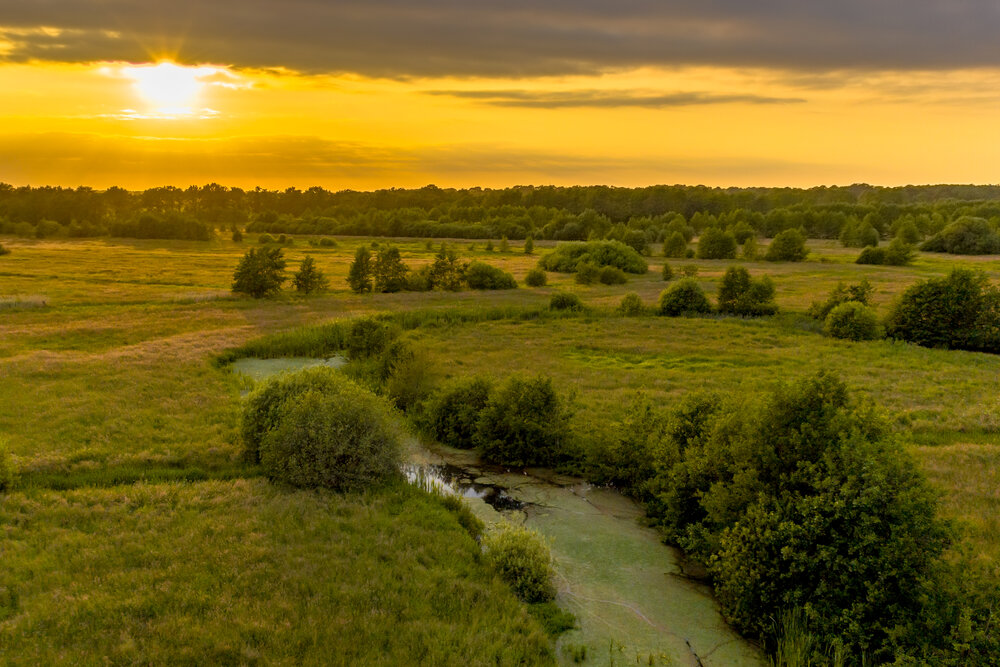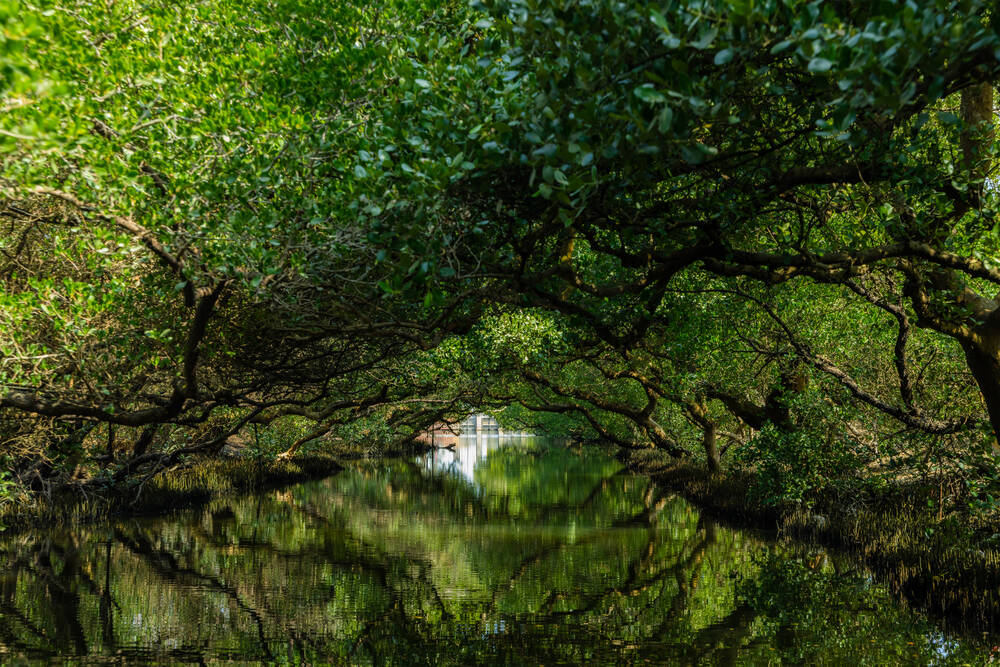Key Takeaways:
- A Habitat Management and Monitoring Plan (HMMP) guides biodiversity gains over a 30-year period.
- On-site HMMPs work towards the 10% mandated goal, whereas off-site HMMPs can sell masses of habitats to multiple different developers.
- A HMMP can either be for on-site BNG (habitat uplifts at a new development), or off-site BNG (habitat banks or units being sold for local developers to purchase).
- The HMMP isn’t rigid and set in stone; it contains adaptive ecological strategies to prepare for unforeseen challenges and roadblocks.
A Habitat Management and Monitoring Plan (HMMP) is a companion document that outlines management proposals for biodiversity delivery.
Either applied to an on-site or off-site HMMPs site, it ensures long-term management, supported by detailed objectives, monitoring, and periodic review management from the ecologist and LPA across the 30 year period.
Our latest article answers all and any questions you may have about the HMMP: a document integral to Biodiversity Net Gain whether you’re a landowner generating income from land or a developer meeting new mandated targets.
We cover its key components, how it’s made, provide links to templates, and offer a leading resource to explore real-world examples of HMMPs in action across England.
What Is a Habitat Management and Monitoring Plan?
To understand a HMMP, let’s start at the beginning of the Biodiversity Net Gain (BNG) process.
When considering selling off-site Biodiversity Net Gain units or delivering on-site BNG, the first step for the landowner or developer is to contact an environmental consultancy or ecologist to carry out a baseline assessment.
This calculates the ecological baseline of the land and the uplift it could deliver over the 30-year mandated period, determining if the land is economically viable for BNG with all fees considered.
If going ahead, the landowner hires the ecologist to create a HMMP (Habitat Management and Monitoring Plan). This is an extensive document that outlines exactly how the habitats will be maintained and uplifted over the 30 years.
This article will delve into the specifics of a HMMP and how it brings BNG from theory into practice.
HMMP Objectives
A HMMP has some overarching objectives built into its framework.
Its primary goal is to deliver the gains it outlines, ensuring the uplift is achieved by meeting the target conditions across the 30 year period.
That being said, its objectives categorise neatly into whether the gains are off-site or on-site, highlighted as follows.
On-Site Gains
For on-site delivery, the developer hires the ecologist to outline exactly how the habitats will be managed over 30 years to meet the 10% gain.
This involves target habitat conditions such as 15 native wildflower species per metre squared or 3 age classes of trees.
Other objectives are monitoring the ecological processes or ensuring delivery is running smoothly post-construction.
On-site delivery combines uplifted biodiversity with the built environment, making the developer directly accountable for the land they are impacting.
Off-Site Gains
Off-site BNG is about recreating lost habitats as close to the development site as possible, to ensure ecosystem continuity, preserve genetic diversity, and to provide direct benefits for local wildlife and communities.
The first rule is to purchase off-site BNG units within the same LPA or NCA as the development.
If no units are available with the required habitats, they can then purchase units in a neighbouring LPA or NCA, but crucially at a 1.3:1 ratio.
If no units are still available in neighbouring LPAs or NCAs, the final option is to purchase units at a national level, but at a 2:1 ratio.
When local restoration isn’t feasible, it ensures that recovery takes place elsewhere, but on a larger scale.
Off-site HMMPs are binding mechanisms for how the landowner will achieve their biodiversity uplift.
Key Components of a Habitat Management Plan
A HMMP is an extensive document with a thorough checklist of key components to ensure it can achieve the ecological target set for the land after 30 years.
Without its key components, a HMMP will struggle to meet its objectives. This can include:
- Site Description – With key details from location and size to designations and constraints.
- Baseline Assessment – Summary of the current habitats on the land and their ecological scores, determining how many BNG units the land is capable of generating in the 30 year period.
- Target Habitat and Conditions – Targets are what the site will achieve in 30 years, such as turning poor condition grassland into a rich wetland mosaic.
- Management Actions – The management actions are what the ecologist will be doing to achieve the gains. Think rewetting, invasive species removal, low-intensity grazing, seeding, silt control, and more. There will usually be between 5 and 15 actions, and they’re rarely done at once, with the most work needed in the first 5 years of establishing habitat phase.
- Monitoring Strategy – Sites must be monitored to ensure they are on track, such as ecological surveys every 5 years, species counts, plant assessments or whatever is in line with the targeted habitats.
- Timeline – Timelines outline what happens ecologically year by year, setting a structure of developments in line with the mandated timeframe.
- Roles and Responsibilities – Roles highlight who’s involved and what they’re doing. This includes the landowner, the ecologist, potentially a consultant, the LPA, a third-party habitat bank, or a stewardship body (i.e. a Wildlife Trust).
- Adaptive Management – If targets aren’t met, adaptive management strategies will be in place with strategic backup plans to ensure the end goal is met. For instance, if wildflower targets fail by year 15, plug planting and reduced mowing will be brought in.
- Maps and GIS Data – Finally, these materials show what’s happening. GIS is a Geographical Information System, digitally capturing the site’s spatial and geographical data. It’s done right at the start, then updated regularly to visualise changes over time.
How to Create a Habitat Management & Monitoring Plan

Check If a HMMP Is Needed
The first step is to see if a HMMP is needed, which can be achieved with the baseline assessment.
For off-site, it determines how many BNG units the land can generate. If this is economically viable and the landowner wants to go ahead? The HMMP is needed.
For on-site, the baseline sees the existing habitats, and considers exactly how much will be lost in development. Unless the site meets an exemption, it will need a HMMP to meet the 10% gain on-site.
Review Legal and Planning Requirements
After determining a HMMP is needed, the legal and planning requirements must be reviewed.
For on-site, this can involve the set planning conditions. For off-site, the landowner should decide which route they want to take. A Section 106 with the Local Planning Authority (LPA) is usually cheaper, but can take over a year with some slow-acting LPAs to grant the agreement. Some councils are still very new to BNG.
A Conservation Covenant (dubbed ConCov) can be a lot quicker; it is often more expensive at times due to the typical co-benefits it grants, from ESG to major conservation charity involvement.
Set Objectives
At this stage the objectives must be set.
On-site, this circles around combining the development with the surrounding nature, and achieving the habitat gain across various parts of the built environment.
Off-site, objectives explore how a piece of land / habitat bank will generate robust BNG units ready to support local development in meeting BNG targets.
Landowners should aim to achieve long-term maintenance and restoration, with strong adaptive solutions and robust monitoring plans in place.
Describe the Site
The next stage is to provide a thorough description of the development site. This must include soil types, what vegetation is currently present, any specific plants or habitats.
Notable features like water bodies or protected areas must be detailed, along with risks such as invasive species.
This applies the same for on-site and off-site, taking a record of exactly what the starting conditions are, and guiding future developments off the initial conditions.
Define Management Actions
Management actions involve the steps being taken to meet said objectives.
For on-site, creating the habitats can be integrated with the different phases of construction to ensure no conflicts.
Grazing may be introduced to enhance vegetation, alongside tree-planting or invasive species removal.
Off-site may be more large-scale habitat restoration, from rewetting entire wetlands or restoring large peatland habitats with optimised timeframes.
There’s usually more flexibility with off-site, allowing you to set clear to-the-point management actions, whereas on-site could be working around awkward spatial restrictions, limited space, and varying operational challenges.
Plan Monitoring
The next section in the HMMP will be your plans of monitoring the project.
Whether on-site or off, there must be set methods in place to ensure developments are in line with overarching targets.
Specifically, this might be species diversity levels, habitat conditions, or whether invasive species are present.
Ecological monitoring tools can include quadrat sampling, transect walks, fixed-point photography, and more; surveys take place in set recurring periods to ensure effective monitoring.
Assign Roles and Timescales
For on-site, stakeholders involved include:
- Developer — carries out the development of the new site,
- Landowner — who legally owns the site (could be the developer)
- Ecologist — creates HMMP, conducts habitat creation, monitoring and consulting
- Site Managers — carries out the physical work
- LPA — monitors the site to ensure compliance
Stakeholders here are usually most active during the first 5 years, covering construction and initial habitat establishment, with ongoing monitoring and management across the full 30-year BNG period.
For off-site, they only shift slightly:
- Landowner — they could carry out the ecological works or adopt a more disengaged approach
- Ecologist — creates the HMMP and carries out the works
- Stewardship Body — might manage the habitats and ensure compliance
- LPA — monitors delivery for compliance
- Developer / Buyer — purchases the units
In this case, habitat restoration and management may have a longer or more flexible intensive phase, but responsibilities still span a full 30 years so long-term gains are achieved.
Add Adaptive Management
Adaptive management essentially allows flexibility for unforeseen roadblocks in a project.
This might be extreme weather, poor plant establishment, or nearby land use changes (i.e. an eco-tourism site turning into a factory).
With on-site HMMPs, adaptive methods could be amending construction schedules to prevent disturbing new habitats, or shifting planting techniques.
If off-site targets aren’t being met, there are various ecological adjustments a trained ecologist can carry out to bring developments back on track.
Include Maps and Data
In on-site HMMPs, maps could usually be smaller, covering the new infrastructure combined with the new habitats being created and restored.
Data might include site layouts, building plans, and green spaces.
When it’s a landowner creating BNG units to sell in the off-site market, data may expand more into ecological boundaries, hydrological data, or GIS layers across a broader restoration area.
Finalise the Report
A finalised HMMP will either be used to qualify the off-site BNG units to pre-list on Gaia, the largest BNG Marketplace by far, with over 40,000 units from over 150 trusted sellers.
This can be finalised by proofreading, adding supporting documents, and formatting appropriately.
Templates for Habitat Management & Monitoring Plans
You don’t have to start from square one. Many key resources exist to facilitate a smooth transition into the new national policy.
For instance, Natural England’s HMMP Template: this is the official standardised template to allow the creation of compliant and thorough HMMPs.
For a more user-friendly and practical option, the Wildlife Trust’s HMMP Template focuses on straightforward management in a less technical manner.

Best Practice Tips
There’s one tip for Biodiversity Net Gain that you’ll hear time and time again, and that’s to start early.
HMMPs should be considered very early in the process or even before it’s begun, as you don’t want to miss out on your baseline opportunity due to seasonal conflicts, or face migratory issues that work upon their own timeframe.
Another solid tip is to engage all stakeholders to ensure all parties are aligned on the project goals, timelines, and individual responsibilities. Without this, the chances of long-term outcomes being successful decrease.
Real-World Examples of Habitat Plans
For real-world examples of HMMPs in action, visit the Gaia BNG Marketplace.
We host the largest collection of BNG units by far, with over £1 billion in total unit value.
With fantastic national coverage, the Gaia BNG Marketplace is completely free to roam, explore, and learn; there’s no log-in required, just register for a free account to send off unlimited enquiries to our verified sellers.
Delve into hundreds of real-world HMMP examples and either explore what’s going on in your neighbourhood or travel across the country to see tangible, real-life environmental action taking place.
On a final note, video capabilities are soon to be added, meaning that you can see in real time the people involved, the work being done, and the lasting effects for England’s biodiversity. Stay tuned on our Linkedin for platform updates as and when they happen.
FAQs
What is a HMMP?
A HMMP is a document outlining how habitats will be managed and maintained to achieve the 10% gain, either on-site (a new development doing BNG at the site) or off-site (a landowner selling BNG units).
Can the HMMP be changed after it’s been approved?
This requires approval from the Local Planning Authority (LPA) if agreed with a Section 106, or with the responsible body if agreed with a Conservation Covenant. Minor changes would be quicker than major changes.
Who pays for the habitat maintenance over 30 years?
In on-site HMMPs, the developer hires an ecologist to conduct the on–site habitat delivery. Off-site, the landowner pays the ecologist to maintain the habitats (or in some cases, the landowner does the work themselves).
If the habitat fails, do developers have to fix it?
On-site yes, but with the help of their corresponding ecologist, who would have prepared adaptive methods in their HMMP.
Off-site, the developer purchases the units, but has no involvement in the ecological work taking place unless they actively choose to. This is the landowner’s responsibility.
More Information
https://www.westberks.gov.uk/article/42551/Biodiversity-and-the-Natural-Environment

